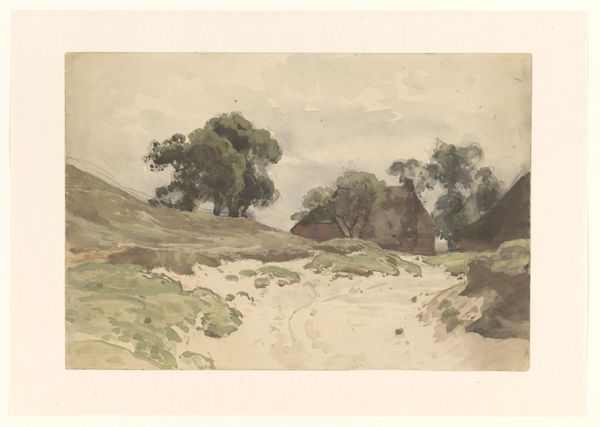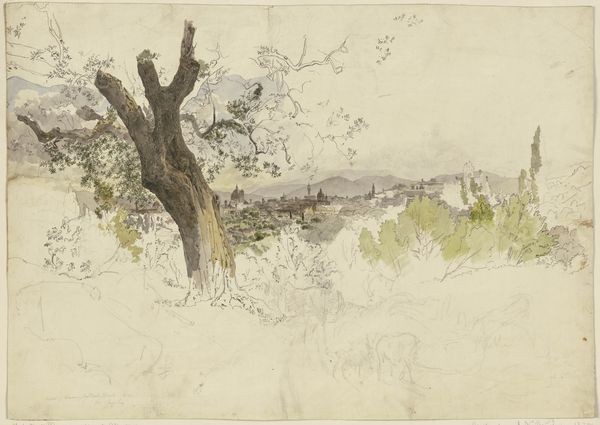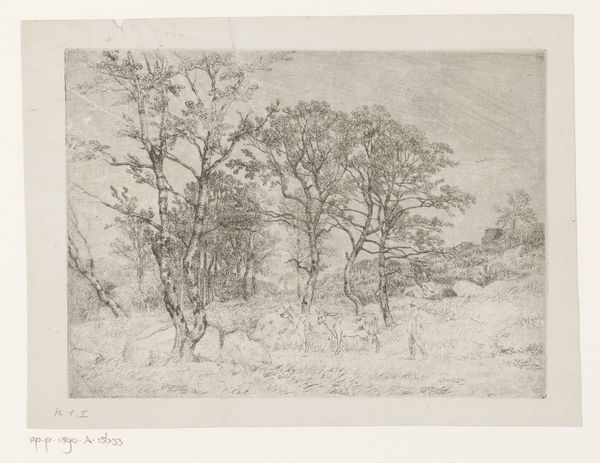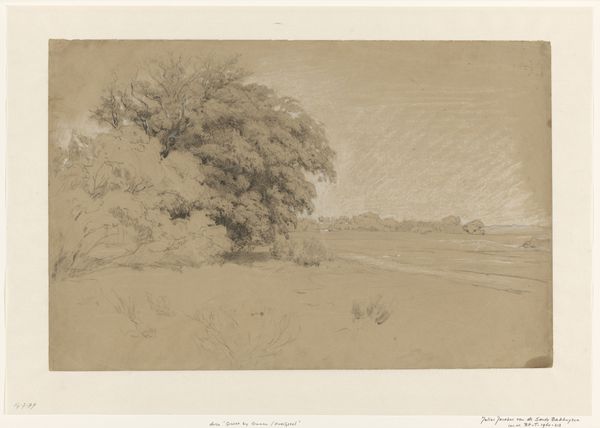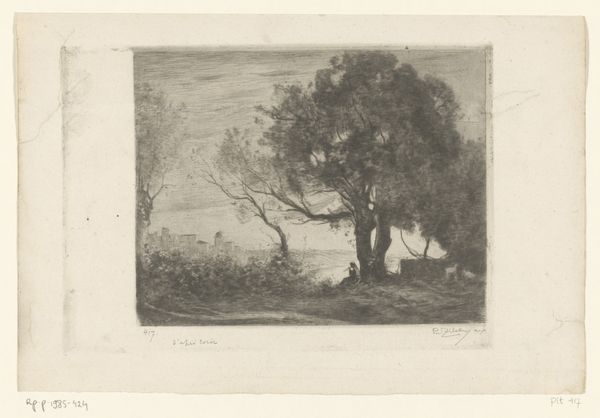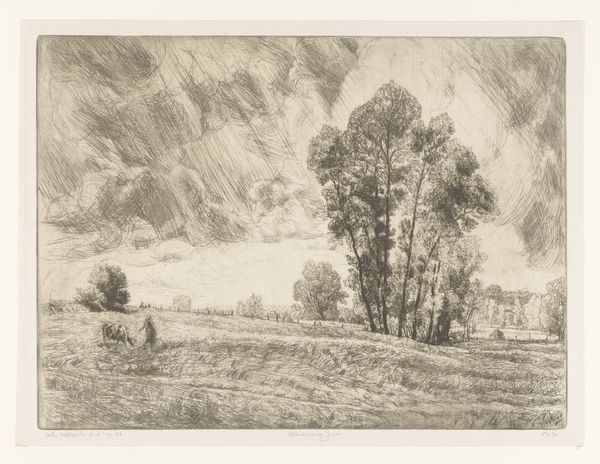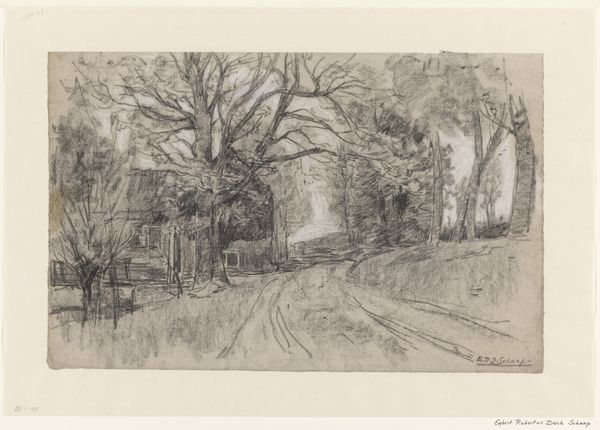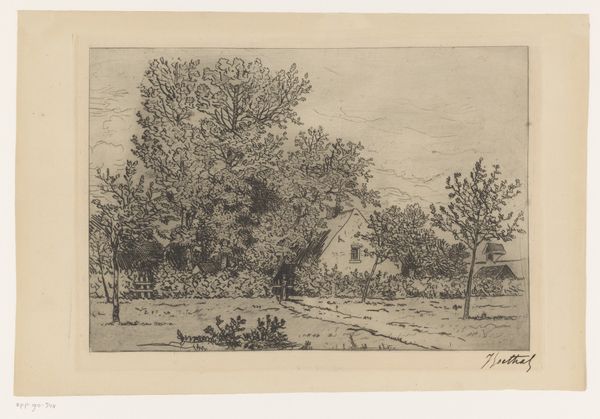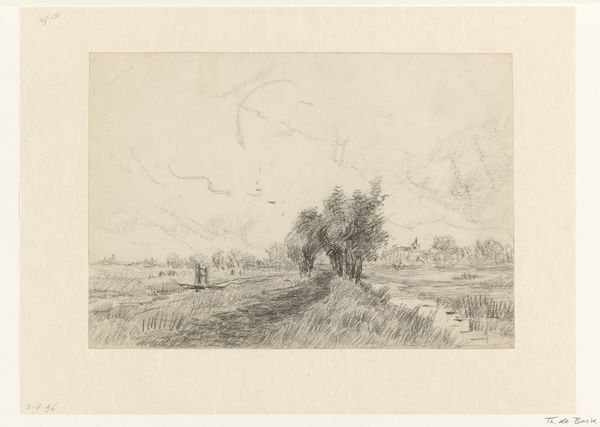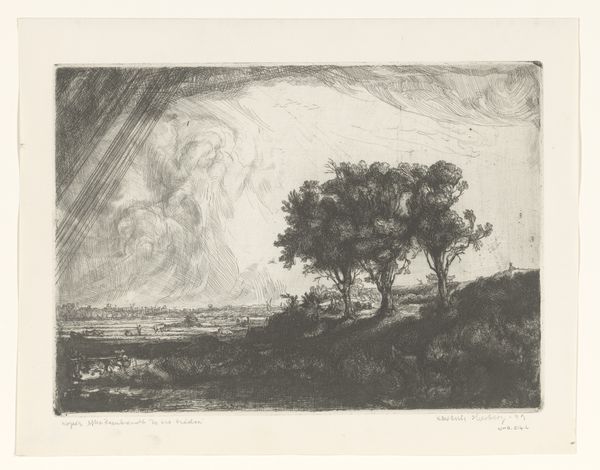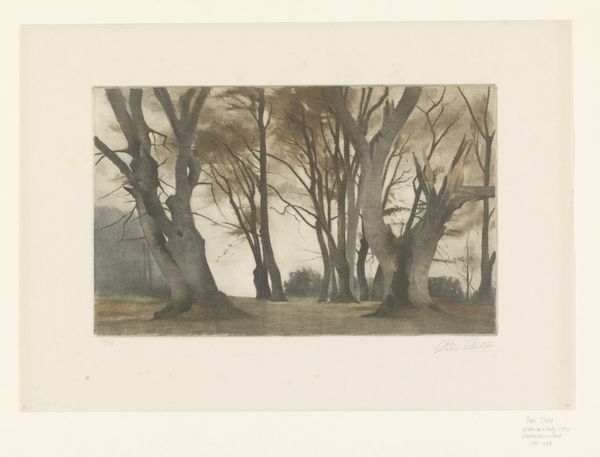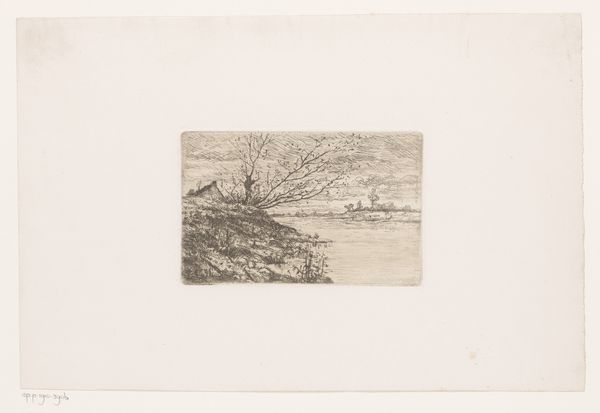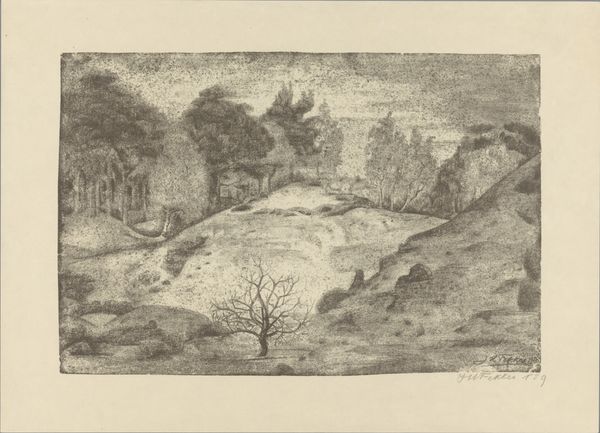
drawing, watercolor, pencil
#
drawing
#
water colours
#
impressionism
#
landscape
#
watercolor
#
pencil
Dimensions: height 305 mm, width 445 mm
Copyright: Rijks Museum: Open Domain
Curator: This is "Duinlandschap," a Dutch landscape piece done sometime between 1861 and 1904 by Théophile de Bock, residing here at the Rijksmuseum. It’s crafted using pencil and watercolor. Editor: Ah, a muted symphony! There's something hauntingly quiet about it, like a half-remembered dream from a windswept afternoon. Curator: I'm drawn to the composition. De Bock uses delicate washes of watercolor to suggest depth. Notice how the artist contrasts the stark, almost skeletal tree with the softly rendered dunes? It’s subtle, not splashy impressionism. Editor: Exactly. That stark tree—it's the key, isn’t it? It acts as a vertical anchor, dividing the scene. Its branches, reaching skyward, give a certain fragility to an otherwise barren terrain. It’s more melancholy than joyous, no? Curator: Absolutely. The somber tones evoke a sense of solitude. The grey palette unifies everything. One can imagine the windswept landscape, the rustling grass—the materiality isn't in the brushstrokes, but the emotional weight. Editor: True, there’s also a real honesty here in de Bock’s rendering of the Dutch landscape. It isn’t prettified or grand. This feels…lived in. A touch threadbare even. Curator: De Bock certainly had an eye for capturing the humble beauty of the everyday. It reminds us that art doesn't always have to be grandiose to be profound. Editor: Yes, it’s a reminder that silence, like shades of grey, holds just as much complexity.
Comments
No comments
Be the first to comment and join the conversation on the ultimate creative platform.
